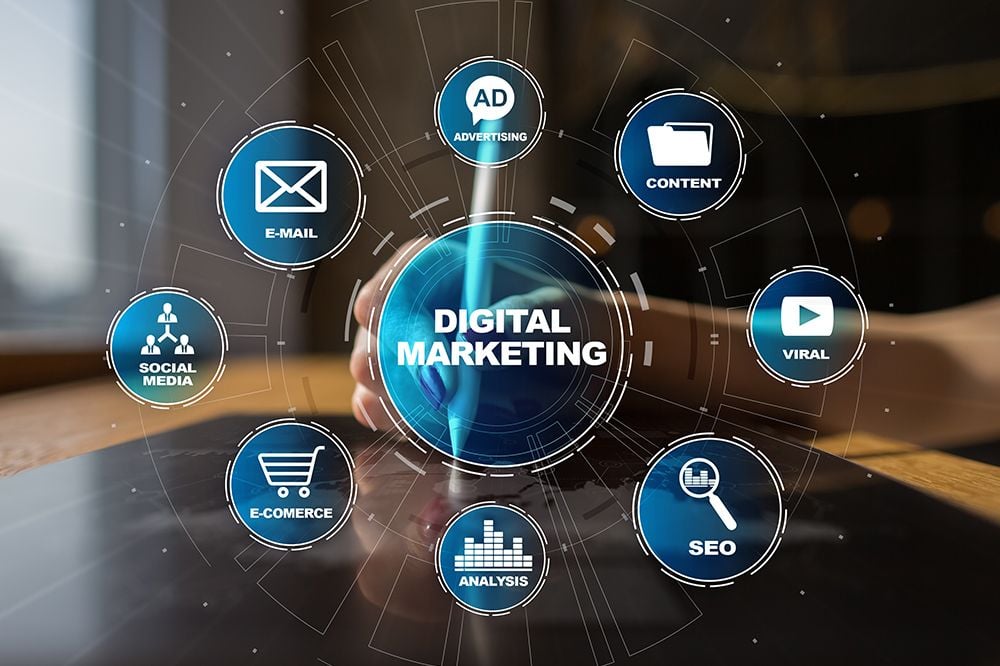
On Page Optimization in Digital Marketing is a foundational element of Search Engine Optimization (SEO) that focuses on refining the internal aspects of your website to improve its ranking in search engine results.
This process involves optimizing the content and HTML source code of pages to make them more appealing to users and search engines alike. Below, we delve into the key components of on-page optimization and provide strategies to help you enhance your website’s performance.
High-Quality Content Creation
Content is king in the realm of digital marketing. High-quality, relevant, and valuable content attracts more visitors and encourages them to stay longer on your website, reducing bounce rates and increasing page views. Here are some tips for creating compelling content:
Target keyword research: Identify keywords that your target audience is searching for and incorporate them naturally into your content.
Content freshness: Regularly update your website with new and relevant content to keep your audience engaged and to signal to search engines that your website is active.
User engagement: Use engaging titles, subheadings, and visual elements to make your content appealing and easy to read.
Title Tags and Meta Descriptions
Title tags and meta descriptions play a crucial role in on-page SEO. They give users and search engines a brief overview of what to expect from your webpage:
Title tags: These should be concise, include main keywords, and be unique for each page. Aim for 50-60 characters to ensure they display properly on search engine results pages (SERPs).
Meta descriptions: Although they don’t directly influence rankings, well-crafted meta descriptions can improve click-through rates. Keep them under 160 characters and make them descriptive and engaging.
Header Tags
Header tags (H1, H2, H3, etc.) help organize content on your webpage for readers and search engines. They can:
Improve user experience: Proper use of header tags makes your content easier to read and navigate.
Boost SEO performance: Including relevant keywords in header tags can help search engines understand the structure and topic of your content.
URL Structure
A clean and organized URL structure improves user experience and strengthens your website’s SEO:
Simplicity and relevance: URLs should be easy to understand and relevant to the content of the page.
Keyword inclusion: Including keywords in URLs can signal their relevancy to search engines, but avoid keyword stuffing.
Optimizing Images
Images enhance the visual appeal of your website and can also contribute to SEO:
File size: Compress images to speed up page loading times, as slow-loading pages can negatively impact rankings.
Alt text: Describe images using alt text to improve accessibility and help search engines index your images more effectively.
Internal Linking
Internal linking helps visitors navigate your website and discover more content, which can increase the time they spend on your site:
Relevant links: Include links to content that readers may find interesting based on the current page.
Anchor text: Use descriptive anchor text that gives an indication of what the linked page is about.
Mobile Responsiveness
With the increasing use of mobile devices to access the internet, having a mobile-friendly website is essential:
Responsive design: Ensure your website adjusts seamlessly to different screen sizes and orientations.
Mobile speed optimization: Optimize for faster loading times on mobile devices to improve user experience and SEO.
Page Speed Optimization
Page speed is a direct ranking factor for Google. Enhancing your website’s loading speed can provide a better user experience and improve your SEO performance:
Optimize code: Minimize HTML, CSS, and JavaScript. Remove unnecessary spaces, commas, and other characters.
Leverage browser caching: Store some data temporarily in browsers to prevent reloading entire pages for repeat visitors.
Conclusion
On-page optimization is essential for improving both the usability and search engine rankings of your website. By focusing on high-quality content, well-crafted meta tags, efficient coding, and user-friendly design, you can create a robust foundation that supports your overall digital marketing efforts. Remember, on-page SEO is not a one-time task but an ongoing process that requires continuous refinement and updates to keep up with the ever-evolving algorithms of search engines.








